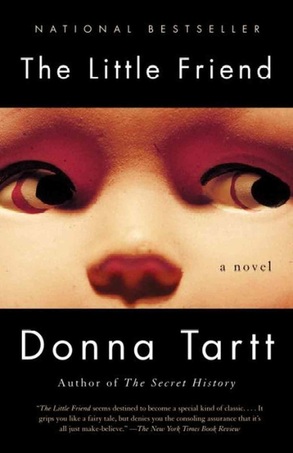 Written by Lauryn Smith You probably know by now that Donna Tartt is one of my favorite authors. “The Secret History” and “The Goldfinch” are both easily on my list of top 10 favorite books. Now I am here to discuss “The Little Friend.” I will not be adding “The Little Friend” to my top 10 list, but it is still worth reading… and then reading again. In this work of fiction, Tartt takes us to the American South. In Alexandria, Mississippi, a young, headstrong girl named Harriet is determined to find justice for the unsolved murder of her older brother Robin, who on Mother’s Day 12 years earlier was found dead, hanging from a tree in his own front yard. Ever since that fateful day, Harriet’s family, particularly her mother Charlotte, has been despondent, and memories of Robin cast woeful shadows whenever they arise. Trouble ensues as Harriet and her faithful companion Hely home in on Danny, a member of the ne'er-do-well Ratliff family, whom they suspect of the crime. Tartt uses these circumstances to illustrate the dichotomies of good and evil, innocence and guilt. Doing so through the lens of a child is a genius decision, as it also makes possible the detailing a person’s coming of age, which adds depth to Tartt’s efforts. The latter theme is tried and true, but Tartt imagines a wholly unique version of the tale, giving readers a flawed though entirely lovable and unexpected protagonist.
0 Comments
Review: “Harry Potter and the Cursed Child” by Jack Thorne, J.K. Rowling and John Tiffany11/13/2016 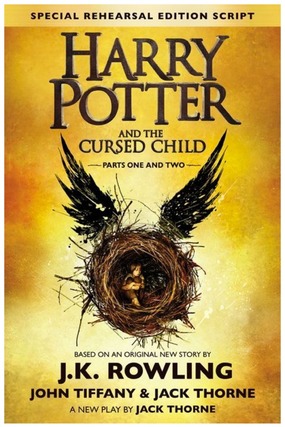 Written by Lauryn Smith Nineties kids rejoice! Jack Thorne, with the help of J.K. Rowling and John Tiffany, has gifted us with a continuation of the “Harry Potter” series—but not in the way you would expect. The three chose to take the story to the stage. Lucky for those of us living in America, the script has been specially bound in book form. (Unfortunately, you can only see the theatrical production at the Palace Theatre in London.) The next installment, titled “Harry Potter and the Cursed Child,” takes places 19 years after “Harry Potter and the Deathly Hallows.” Instead of focusing on the titular character as in the first seven books, we now focus on his son, Albus Severus Potter. The young Potter, who is just beginning his studies at Hogwarts, struggles to live up to The Chosen One and his legacy in the wizarding community. To make matters worse, the Sorting Hat places Albus in the House of Slytherin. After a dispute between son and father a few years later, Albus becomes fed up with perceived expectations, so he determines to have an impact of his own, despite his father’s ignorance and overprotection. What follows is an epic of good versus evil, light versus dark, that involves Cedric Diggory (yup), House drama, a forbidden Time-Turner and more. Past and present merge, family dynamics are explored, and potential catastrophic darkness looms. Let’s set something straight from the get-go. This read is a screenplay, descriptions of characters, locations, actions and all. The story is therefore more superficial than the previous books in the series. The 300 pages are reflective of the length of the play, and the detailing is minimal. If you are not used to reading screenplays, you may be a bit disappointed with “Harry Potter and the Cursed Child.” 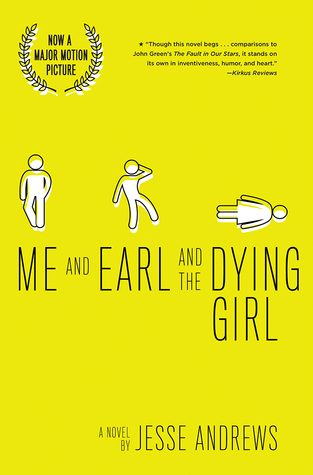 Written by Lauryn Smith Remember how I was just saying that it is possible for young adult novels to be both quirky and meaningful? (I recently reviewed one that was just… not.) I now have proof. “Me and Earl and the Dying Girl” by Jesse Andrews is an awesome YA novel, one that is both entertaining and artful. It was even made into a movie recently. No, I have not seen the movie adaptation yet; I am abiding by the unspoken rule that you need to read a book before you see its movie. Now that I have read the book, I am all for seeing the motion picture; it is probably awesome, too. The story is told from the perspective of Greg Gaines, a teenager dealing with the peril that is high school. His philosophy: be friendly to everyone, but make no friends. The logic is that if everyone knows just a little bit about you, they will generally like and accept you. Things are easier that way. The only person Greg defines as a friend is Earl, a gritty guy with a dirty mouth who lives by no rules. The boys’ shared interest is film, both the viewing of and making of. Together, they recreate all kinds of movies, most of which turn out comedic despite the intended genre. All is well and good until one day Greg’s mom asks him to befriend Rachel, a childhood acquaintance who was recently diagnosed with leukemia. After some trial and error, Greg becomes Rachel’s welcome comedic relief. Despite his reluctance to let anyone see his films, Greg shares them with Rachel, who finds great joy in them. So much joy, that Greg and Earl vow to make a film about Rachel’s life. 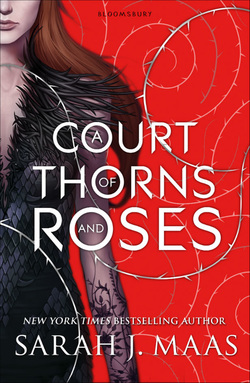 Written by Lauryn Smith I am not likely to win any friends with my review of “A Court of Thorns and Roses” by Sarah J. Maas. Recommended to me by another Reviewer, this book is a Young Adult fan favorite, but I question whether I can get on board. Before you ask, yes, I kept an open mind while dutifully reading through to the very last page (a necessity, since I swore to read its sequel, which I have been assured is much better than its predecessor). “A Court of Thorns and Roses” is the first in Maas’s A Court of Thorns and Roses series. An amalgamation of “Beauty and the Beast,” “Fifty Shades of Grey,” “Twilight,” a touch of “The Lion, the Witch and the Wardrobe” and a pinch of “The Hunger Games,” this book exemplifies fan fiction, and not entirely originally (more on this later). In it, a teenaged, wholly human diamond in the rough named Feyre kills a fearsome wolf in the woods and soon after is snatched from her derelict home by a handsome and fierce faerie, because, surprise, that wolf was actually a faerie, too. But her captor, Tamlin, is no ordinary faerie. He is a High Fae—a normal faerie but more striking, more magical and more powerful. Now a forced resident of Tamlin’s estate, Feyre learns that the kingdom’s residents are in turmoil and at risk of losing their powers, effects of a curse that was put on the land. Another effect? The faeries all have masquerade masks permanently stuck to their faces. Naturally, Feyre and Tamlin bond and fall in love, and Feyre’s sacrifice on Tamlin’s behalf restores peace to the land. 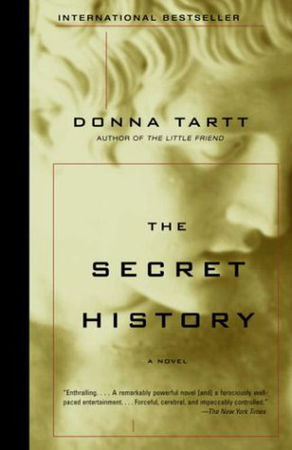 Written by Lauryn Smith Immediately after finishing Donna Tartt’s “The Goldfinch” earlier this year, I thought “this-author-and-her-books-are-so-good-I-need-more-like-now.” Luckily, I own a copy of “The Secret History,” which I first read back in high school. Reading it again, my conviction that this woman will forever be one of my favorite authors is even stronger. “The Secret History” is Tartt’s debut novel. In it, she tells the fictional tale of a tightly knit, isolated group of six students who study Greek at an elite New England college. Yawn? I think not. Tartt presents the novel’s entire premise from the get-go, so I am not giving away a major plot point when I tell you that one member of the group is murdered by the others. “The Secret History” is commonly referred to as a “murder mystery in reverse.” Once readers are alerted of the murder, the remainder of the book explores the execution and consequences of the crime, as well as the reason behind it. The narrative is presented as a years-later reflection from the perspective of one of the students, Richard Papen. As he details his college experience, he focuses on the peculiarities of his Greek classmates and Julian, the group’s eccentric, highly revered professor, who is also, unconventionally, the group's only professor. Richard relates the nuanced elements of the many and varied interactions he has with each member of the clique, and these elements incessantly compound until they explode into one of the best twist endings you will ever encounter. 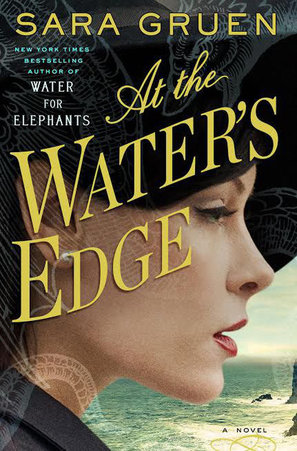 Written by Lauryn Smith Given that Sara Gruen authored “Water for Elephants” (one of my favorite books, in case you missed it!), there was no question that a review of her latest novel “At the Water’s Edge” would appear on BNR sooner or later. After a three-month hiatus, the time has come. Though not as addictive as “Water for Elephants,” “At the Water’s Edge” is a pleasant read. It is not much of a page-turner, and it includes a host of spoiled, rather dull characters, but overall, it is a smooth, interesting, well-written narrative with occasional complexity. Like some of Gruen’s previous novels, “At the Water’s Edge” is a period piece, this time set in the Scottish Highlands during the 1940s, right in the midst of World War II. The story follows the life of a rambunctious, privileged young Philadelphian woman named Madeline (Maddie) Hyde. After getting out of hand at one too many social gatherings, Maddie and her husband, Ellis, are financially cut off from Ellis’s family. Given their predicament, Maddie loyally accompanies her husband, along with their close friend Hank, on a trip to Scotland to complete a mission the men believe will ultimately restore the couple’s determinedly reckless lifestyle. 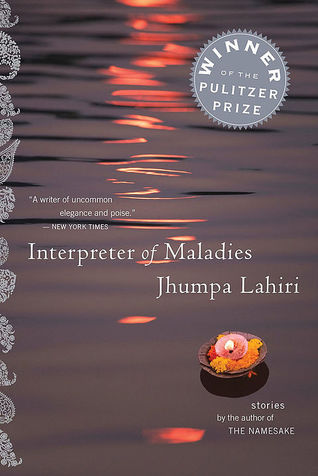 Written by Lauryn Smith Jhumpa Lahiri is one of the most talented writers I have ever had the pleasure of reading. I have now read her book of fictional short stories “Interpreter of Maladies” three times, and the latest instance has only reinforced my admiration. Lahiri’s writing is beautiful and effortless. Crafting a short story is no easy feat, yet each within the “Interpreter of Maladies” collection is stunning. The title story involves the Das family, composed of a first-generation American couple of Indian descent and three young children, as they tour India. Lahiri tells the story from the perspective of Mr. Kapasi, the family’s local tour guide and driver. It is soon revealed to the family that Mr. Kapasi also works as an interpreter for a physician who does not speak his patient’s languages. As he is able to speak many of the languages of India, Mr. Kapasi translates people’s woes for them, a skill for which Mrs. Das deems him an “interpreter of maladies.” Something about the Das family captivates Mr. Kapasi. He finds Mrs. Das particularly enamoring, partly due to of the special attention she pays him relative to her husband and children. Yet as she continues to romanticize Mr. Kapasi's role of medical confidant, she begins to reveal her own unexpected confidences, and for Mr. Kapasi, the situation turns sour. 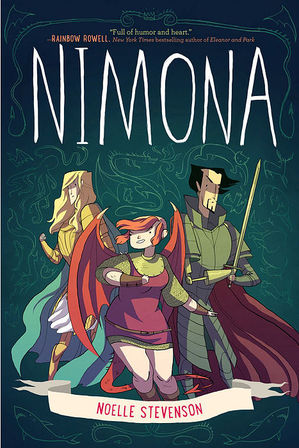 Written by Lauryn Smith The first and last graphic novel I read was for a contemporary fiction class in college. From that experience, I learned that there are some things that pictures, or a combination of pictures and text, can better accomplish than text alone. I used to think that graphic novels were only for young readers, but I have since changed my mind—graphic novels can actually be full of meaning. So when Reviewer Beth Winters suggested I read “Nimona” by Noelle Stevenson, I agreed. I was not disappointed. "Nimona,” which falls in the young adult genre, is a full-color graphic novel based on Stevenson’s web comic of the same name. In this work of fiction, there are heroes and villains and dragons and science and contemporary ideology. Essentially, Stevenson’s story consists of classic premises sprinkled with modernity. The eponymous character, young in relation to the book’s other characters, one day shows up at the home of bad guy Lord Ballister Blackheart asking to be his sidekick. Reluctantly, Blackheart agrees. He and Nimona, who turns out to be a skilled shapeshifter, make and execute "villainous" plans, one of which leads them to discover that the powerful Institution of Law Enforcement is up to no good. Complicating matters is the fact that Blackheart’s once good friend Sir Ambrosius Goldenloin works for the Institution. Naturally, chaos ensues. 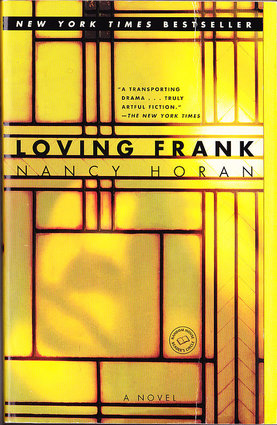 Written by Lauryn Smith If you have not already, I suggest picking up a copy of Nancy Horan's "Loving Frank" so that you, like so many architecture aficionados, can come to understand the man who is Frank Lloyd Wright. “Loving Frank” is Horan’s first historical novel. In it, she tells Wright's tale through the lens of Mamah Borthwick Cheney, who is best known for her love affair with the famed architect. The book provides a unique glimpse into Wright's life, but Horan demonstrates that Mamah is also an interesting a character, and for reasons other than her scandalous romance with the man whom the American Institute of Architects would come to deem "the greatest American architect of all time." Horan gets points for doing two stand-out characters justice in one true-to-life novel. Told chronologically, “Loving Frank” begins in 1903, the year in which Wright is commissioned to design Mamah’s new home in Oak Park, which is just outside of Chicago. During the construction of the house, Mamah and Wright develop an attraction, an attraction that draws both from their respective spouses and children. Together they begin a physically and emotionally tumultuous journey, which comes to a tragic end. I desperately want to tell you what happens, but talk about a spoiler! Let's move on. 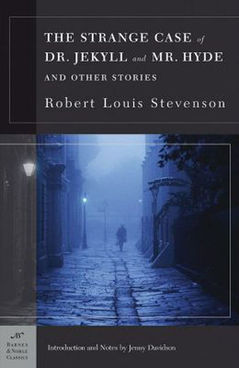 Written by Lauryn Smith Everyone knows Jekyll and Hyde. They have been portrayed everywhere, from Broadway’s stage to PBS’s Arthur. The story of Jekyll and Hyde is unprecedented, a tale depicting an omnipresent internal struggle—good versus evil. Despite its spread, it was not until recently that I actually read Robert Louis Stevenson’s “The Strange Case of Dr. Jekyll and Mr. Hyde.” Heck, I listened to the audiobook before finally venturing into text itself. When they are hanging out in your “to read” pile, Stevenson’s stories can be daunting. Sure, his works are classics. But they are also from the nineteenth century, so the language is not the most accessible to modern readers. Or so I thought. We will talk about that in a moment, but first, let’s get familiar with the story. Described as both a thriller and an allegory, “The Strange Case of Dr. Jekyll and Mr. Hyde” is an anecdote that demonstrates the duality of man. Predominantly told from the viewpoint of the honorable lawyer Gabriel John Utterson, the story depicts the struggle of Henry Jekyll, a highly respected doctor with suppressed desires that go against public mores. A man of chemistry, Jekyll concocts a potion that he uses to transform himself, to free his repressed, more wicked self, whom he calls Edward Hyde. |

Enjoying my book reviews? If you’ve found them helpful or simply love diving into a good book, consider supporting my caffeine-fueled reading sessions! Your contribution helps keep the reviews coming and ensures I stay wide awake for those late-night reading marathons. Cheers to a shared love for literature! ☕️
Categories
All
|
